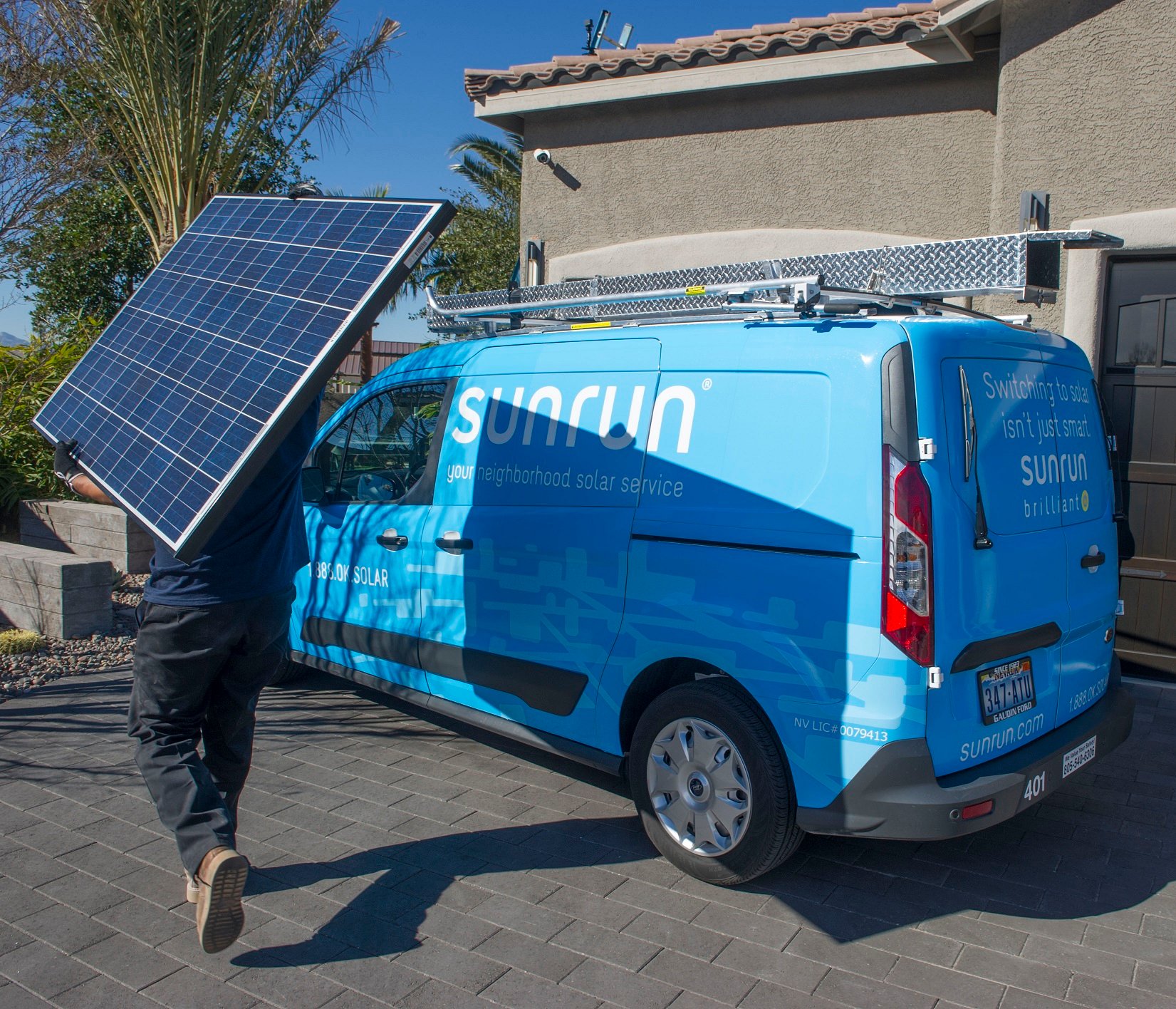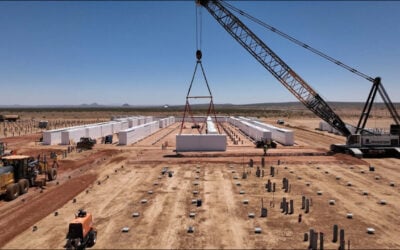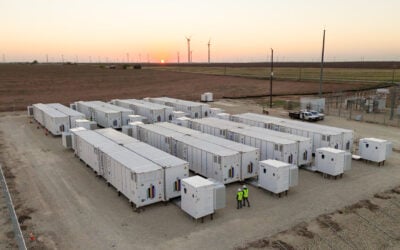
Sunrun CEO Lynn Jurich has said that using behind-the-meter batteries to provide grid services could be “extremely valuable in certain targeted ways,” as the company rolls out energy storage systems into key regional markets.
In a conference call with financial analysts to discuss the US residential PV installer’s Q3 2017 financial results, Jurich and executive chairman Ed Fenster expressed their belief that solar-plus-storage presents the long-term future of PV, while explaining aspects of its strategy to focus on early key markets.
Enjoy 12 months of exclusive analysis
- Regular insight and analysis of the industry’s biggest developments
- In-depth interviews with the industry’s leading figures
- Annual digital subscription to the PV Tech Power journal
- Discounts on Solar Media’s portfolio of events, in-person and virtual
Or continue reading this article for free
Last year, Sunrun launched BrightBox, its own-branded residential energy storage system, in California following a move into the Hawaii market, two US states currently seen to have favourable economics and supportive regulatory frameworks for storage. In Hawaii, high electricity prices due to fuel imports and revisions to net metering regimes have given solar-plus-storage an inherent value, while California, also a rooftop solar leader, has introduced some time-of-use electricity rates as well as hosting the SGIP (Self-generation incentive program) scheme. BrightBox is also available in Arizona, another solar-rich state.
Market will be ‘very supportive’ of solar-plus-storage
Sunrun did not give figures for BrightBox’s sales or deployments so far. However company CFO Bob Komin described BrightBox as an additional product offering that the company was investing in, claiming that it did not negatively affect net present value (NPV), calculated as project value minus creation costs.
Sunrun’s NPV for the quarter was at US$1.15 per Watt, an aggregated US$93 million increase in NPV, which was a 21% improvement on the equivalent period of last year. The executives said the attachment rate for energy storage with new PV systems was increasing and that they expected to see that trend continue. While storage adds costs per Watt for Sunrun, it also contributes to higher NPV.
“We are absolutely not constrained by our capital sources in the deployment of batteries, and we do not expect that we will be constrained in the future,” Ed Fenster said later in the call.
“I think, like everyone who follows the industry, folks who provide project financing, know batteries are the future and that it's important to integrate them into systems. What lenders and tax equity investors want to know is that they work and that we've been thoughtful about it,” Fenster said, adding that Sunrun expects the market to be “very supportive” of solar-plus-storage deployments.
Puerto Rico demonstrates ‘expansive societal value’ of PV and storage
Jurich said that Sunrun, along with several other major PV and battery energy storage providers, is working on various projects in Puerto Rico, restoring power and building resilient solutions for the future.
In the years before the recent hurricanes, Puerto Rico had already been considered by many to be something of a test bed for solar-plus-storage and its addition to an island grid. Rules have been in place for around three years that mandate renewable energy systems must have some energy storage attached at a capped proportion of generation capacity. However, the bankruptcy of grid authority PREPA had slowed down developments on the island.
“Puerto Rico may offer an example sooner than we expected for the expansive societal value of distributed solar plus storage,” Jurich said in yesterday’s call.
“When the power grid went out in Puerto Rico and estimated restoration times were months away, we knew we had to act. Within weeks, we had mobilised and joined forces with Empowered by Light to donate and install systems to first responders in Puerto Rico. And within days of landing, we had already activated a first system for a fire station, allowing them to serve their communities 24/7 with solar-plus-storage despite the grid being down.”
Data produced recently by utility-scale energy storage provider AES showed that two systems it had deployed on another hurricane-hit region, the Dominican Republic, helped ensure resiliency and stability of electricity supply to its immediate vicinity. Meanwhile the US Energy Storage Association and Solar Energy Industries' Association (SEIA) have opened an appeal to coordinate donations and charitable efforts to their respective industries.
Grid services and their locational value
Jurich referred back to an assertion she had made in a previous earnings’ call that offering grid services from aggregated household batteries could be worth US$2,000 to Sunrun, per customer. However, she clarified that this value is highly variable from region to region, depending on how congested or unreliable the local grid is and therefore the size of the role energy storage plays in alleviating those problems.
Analyst Rachel Lei of Deutsche Bank asked about the potential upsides from the storage business, with regards to grid services. Jurich said that it was too early to forecast the overall value, which is likely to be “really directional, and it's going to be highly locational”.
“And that's one of the real values of our asset as compared to more in front of a meter, utility scale-type storage is that the congestion in power prices vary hugely based on like neighborhood to neighborhood, right? And so like it can actually be extremely valuable in certain targeted ways, and I – we're just at the early, early days of figuring how to monetise that, and how do you pitch it to a consumer and who shares in the value?”
Sunrun has a partnership in place with T&D system operator and energy supplier National Grid the investigate the possibilities for grid services, which Jurich said could help reach scale for its offerings and overcome that strong barrier to entry.
Regional focus makes sense, analyst says
For now, Sunrun sees the major opportunity for solar-plus-storage in carving out market share in California, in particular, due to recently introduced time-of-use rates for power. Jurich said Sunrun sees “battery plus solar as a service” as a business model likely to rival the various “solar as a service” models now being offered.
Recently, GTM Research analyst Brett Simon told Energy-Storage.News that it made good strategic sense for Sunrun to focus mainly on California and Hawaii, especially with the residential storage market still in its infancy in the US.
“So even being targeted on Hawaii and California is probably sufficient for the near term, given that those are the two hottest residential storage markets, so there isn’t a need to expand the offering elsewhere at the moment. It makes sense to go where the demand is and where the economics, even if they’re not a clear slam dunk, at least the argument can be made for them as opposed to other places,” Brett Simon said.
Conference call transcript by Seeking Alpha.






